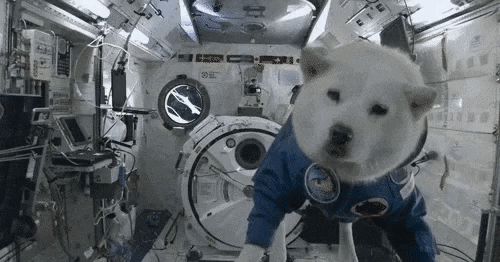Nature-Based Solutions sometimes have the bad rap of being a “hippie science.” But is that even remotely true? (Spoiler, no!)
For decades and centuries, we’ve tried to domesticate nature, and cover it with layers of grey engineering. Unless you’ve been traveling to Mars during the past decade, you’ve probably noticed that this line of thinking touched its limit.

This is why it is about time to bring back a bit of Nature’s billion years of R&D in the Water Industry‘s engineering practices and water management. Let’s review ⬇️
Table of contents
What are Nature-Based Solutions?
I’m always struggling a bit to translate the official french name of my engineering degree because, to a wide degree, it’s Water Engineering, and that’s what I’ve been doing for most of my career.
But officially, I’m also, if not foremost, an environmental engineer. And that’s the part to which I’m somehow reconnecting with today’s deep dive on nature-based solutions.
If I’m opening with this personal statement, it’s not by pure narcissism. It’s rather to point out that nature-based solutions are not just about letting nature do its stuff. It’s about leveraging an amazing research and development job nature has done.
Basically nature has spent 3.8 billion years doing the R&D that is required to produce life. All we have to do is learn from nature! So we spend all of that energy teaching people about nature instead of learning from nature.
Denise Mall – Managing Director of ENSO EARTH
And when you’re running so much R&D, you end up with processes and systems that are marvels of technologies, if you look close enough.
If you look closer at the nature processes, the nature of functions, you understand that there is a lot of technology in it actually.
Marc Barra
To the Root of Sustainable Frameworks and Concepts
Everything we’ve developed to rationalize what we’re seeing in nature, what we’re doing to nature, or what we shall do in the future to be more sustainable all boil down to a single component.
Living future, biomimicry, circular economy, donut economy, nature-based solutions: all these concepts are the same because it’s being based on the circularity of nature. It’s based on nature’s solutions and the realization that nature designs circularly.
Denise Mall – Managing Director of ENSO EARTH
It doesn’t mean at all that the concepts are wrong!
It rather tells that they are right because they’re based on the 3.8 million years of R&D we mentioned earlier.
Learning from Historical Lessons
Do you remember how we defined technology development as a race in our deep dive on Water Entrepreneurship? Well, it’s not because it’s a race that we need to invent everything from scratch.
It’s also just looking a little bit into the past. It doesn’t sound very cool, but I do think we will find some of the solutions for the future in the past.
Alice Schmidt – Author of THE SUSTAINABILITY PUZZLE
It’s a bit about being humble enough to say “OK, we experimented with grey engineering only, and it wasn’t fully satisfactory!”
That’s not a problem; in an agile world, it’s rather a chance: we failed fast, let’s learn from it, let’s keep what’s good, and let’s pivot the rest, why not towards greener approaches.
Where to Apply Nature-Based Solutions?
1. On the Countryside
As Michael Stanley Gallisdorfer explains:
We’re talking about things like large scale mega engineering projects. Dam based flood control, flood retention, reservoirs, something to capture the water before it gets to the city so that the city doesn’t get washed away. Well, that works! But there’s a lot of costs to that, also. We lose all of the ecosystem services of the river by simplifying the river system. By disconnecting it from its flood plain, we lose all of the nutrient processing capacity in the river basin.
Michael Stanley Gallisdorfer
That’s true for rivers and the countryside, but that’s also true…
2. In Cities
As James Murray shares about Glasgow’s and Scotland’s approach:
Civil engineering has been about the big projects, the construction, the hard stuff, but we need to transition to softer approaches these days for a whole variety of reasons!
If you’re building two or more houses, then you need to have suds as part of that. You need to have a sustainable drainage system.
All of this is basically around trying to manage water closer to where it lands, trying to reuse surface water if we can, but certainly trying to slow it down and control it before it gets into the formal piped sewer.
If we can keep water on the surface, it just slows it down. And it gives it a chance to be used by vegetation, to be evaporated by the sun, even in Scotland, before it gets into the drainage system.
James Murray – MGSDP Manager
So, will nature-based solutions totally wipe out hard engineering?
Nature-Based Solutions teaming up
I don’t think so, because as Denise Mall explains:
Most of the pollution is giving nature chemistry. She does not think. And therefore doesn’t know what to do.
Denise Mall – Managing Director of ENSO EARTH
Yes, we will still need to clean a bit of our mess (to quote Denise in my deep dive on SDG6, check it out!)
But we can and shall leverage nature’s talents to find synergies and win-wins on the go.
As far as I remember, there’s no Planet B, so let’s better work with Planet A!
Innovate4Cities – A Nature-Based Solutions Conference
Last year I had the chance to host and moderate a specific series of conferences during the United Nation’s Innovate4Cities event.
My panel of Nature-Based Solutions experts included, besides Marc Barra and James Murray already quoted here above, Silvana Di Sabatino to discuss the application of NBS in the countryside.

